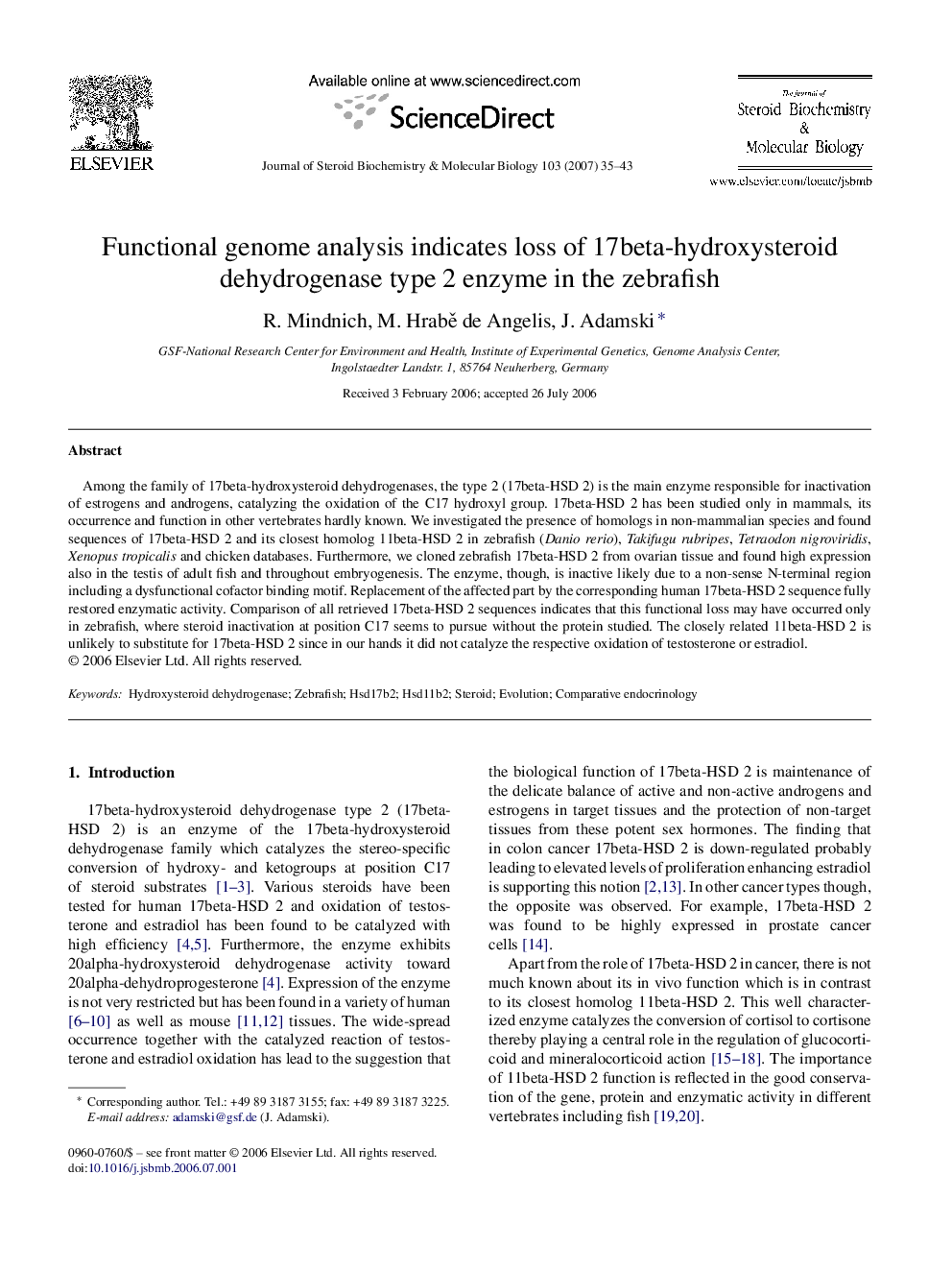| Article ID | Journal | Published Year | Pages | File Type |
|---|---|---|---|---|
| 1992325 | The Journal of Steroid Biochemistry and Molecular Biology | 2007 | 9 Pages |
Abstract
Among the family of 17beta-hydroxysteroid dehydrogenases, the type 2 (17beta-HSD 2) is the main enzyme responsible for inactivation of estrogens and androgens, catalyzing the oxidation of the C17 hydroxyl group. 17beta-HSD 2 has been studied only in mammals, its occurrence and function in other vertebrates hardly known. We investigated the presence of homologs in non-mammalian species and found sequences of 17beta-HSD 2 and its closest homolog 11beta-HSD 2 in zebrafish (Danio rerio), Takifugu rubripes, Tetraodon nigroviridis, Xenopus tropicalis and chicken databases. Furthermore, we cloned zebrafish 17beta-HSD 2 from ovarian tissue and found high expression also in the testis of adult fish and throughout embryogenesis. The enzyme, though, is inactive likely due to a non-sense N-terminal region including a dysfunctional cofactor binding motif. Replacement of the affected part by the corresponding human 17beta-HSD 2 sequence fully restored enzymatic activity. Comparison of all retrieved 17beta-HSD 2 sequences indicates that this functional loss may have occurred only in zebrafish, where steroid inactivation at position C17 seems to pursue without the protein studied. The closely related 11beta-HSD 2 is unlikely to substitute for 17beta-HSD 2 since in our hands it did not catalyze the respective oxidation of testosterone or estradiol.
Keywords
Related Topics
Life Sciences
Biochemistry, Genetics and Molecular Biology
Biochemistry
Authors
R. Mindnich, M. HrabÄ de Angelis, J. Adamski,
